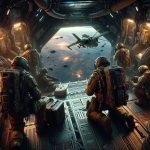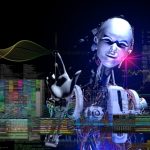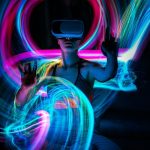The development of generative models like Stable Diffusion and DALL-E marks a significant advancement in digital creativity. These models have the ability to generate art that can either emulate existing styles or produce entirely novel creations. The heart of the matter lies in distinguishing if the generative art represents a unique contribution or a replication of established styles, which is essential for understanding the models’ operations and the originality of generated artwork.
Historical exploration into the realm of generative models reflects an ongoing interest in how artificial intelligence can replicate and innovate upon human creativity. Prior endeavors have sought to define and capture artistic styles through computational means, continually refining the intersection between technology and art. The evolution of these tools has been marked by the increasing sophistication of models capable of analyzing and reproducing complex artistic elements, setting the stage for the latest developments in understanding artistic style through AI.
What Makes Artistic Styles Unique?
Researchers from New York University, ELLIS Institute, and the University of Maryland have pushed the boundaries of AI’s interpretative capabilities with their Contrastive Style Descriptors (CSD) model. This model distinguishes itself by focusing on the stylistic elements of images rather than their semantic content. By developing a unique dataset called LAION-Styles and employing self-supervised learning, the CSD model detects subtle stylistic differences and quantifies the stylistic relationships between images. The study’s objective is to dissect the stylistic DNA of images, bypassing previous methods that emphasized content over style.
How Does Data Influence Generative Art?
The LAION-Styles dataset underpins the CSD model’s learning scheme, allowing it to capture and quantify styles as perceived by humans. The dataset’s design is pivotal in bridging the subjective nature of art with the model’s objective analysis. As a result, the researchers have revealed a spectrum of style replication fidelity in the Stable Diffusion model, emphasizing the formative influence of training datasets on generative models’ output and suggesting a tendency toward particular styles based on dataset representation.
Can AI Recognize Artistic Integrity?
The research also delves into the quantitative aspects of style replication. It offers a granular perspective on the Stable Diffusion model’s performance in emulating styles, important for safeguarding artists’ unique styles and for users interested in the provenance of their AI-generated art. A paper titled “Contrastive Learning of Global and Local Features for Medical Image Segmentation with Limited Annotations” published in the journal Pattern Recognition provides valuable insights on the contrastive learning aspect, which is integral to the CSD model, further illustrating the model’s precision in distinguishing and quantifying artistic styles.
What Implications Does This Have?
The framework’s examination of generative models’ interaction with diverse styles suggests that model preferences may reflect the prevalence of certain styles in their training data. This raises questions about the diversity of styles that AI can replicate and the potential limitations inherent in their training datasets, pointing to a more complex relationship between input data and artistic output.
Useful Information for the Reader:
- Generative models can create art that both emulates or innovates styles.
- Contrastive Style Descriptors (CSD) focus on style over semantic content.
- Training datasets significantly influence style replication in AI art.
As the investigation concludes, it is clear that the study has tackled a crucial aspect of generative art by quantifying the extent of style replication in models like Stable Diffusion. The introduction of a novel framework that prioritizes stylistic elements offers a deeper understanding of the mechanics behind style replication. The insights provided by the LAION-Styles dataset and the multi-label contrastive learning scheme shed light on the influence of training datasets on generative models and help quantify style similarities with unprecedented precision, offering practical knowledge for artists and enthusiasts alike.










